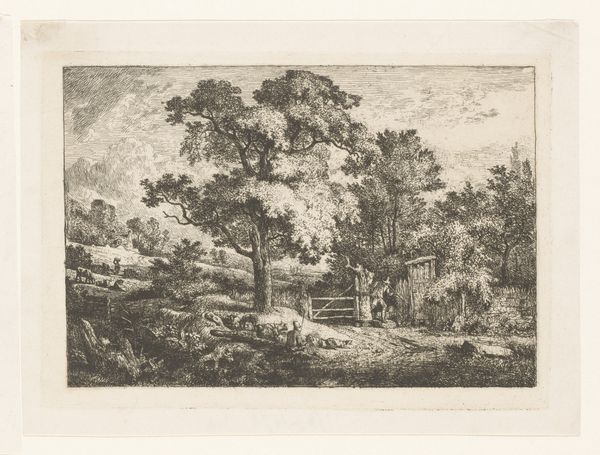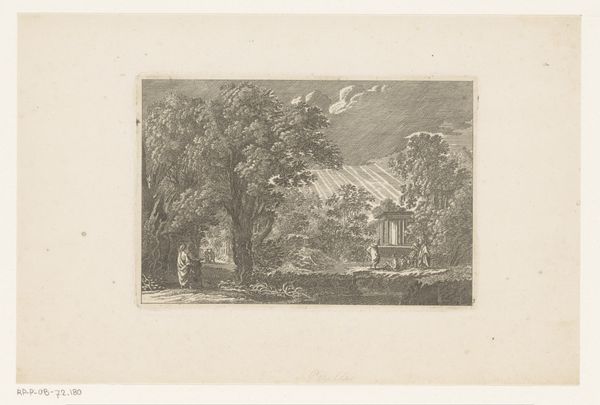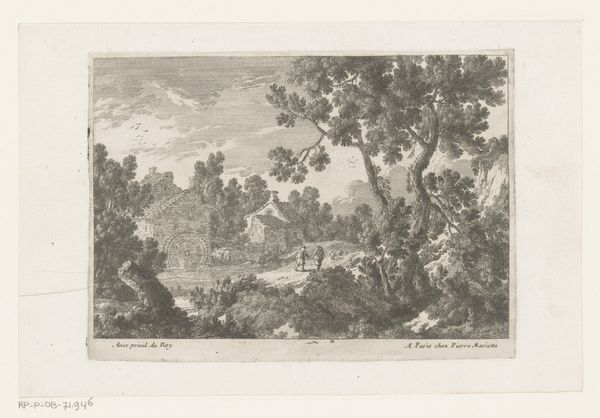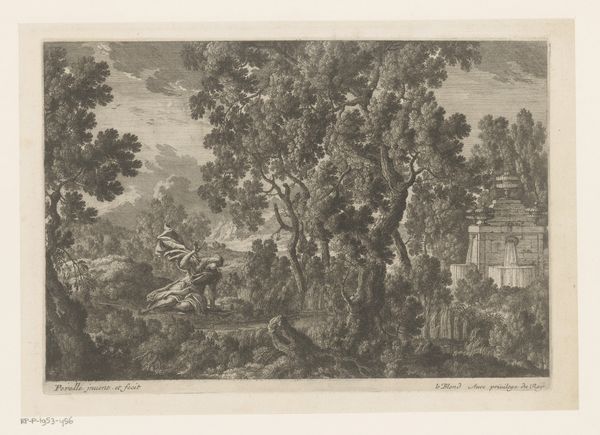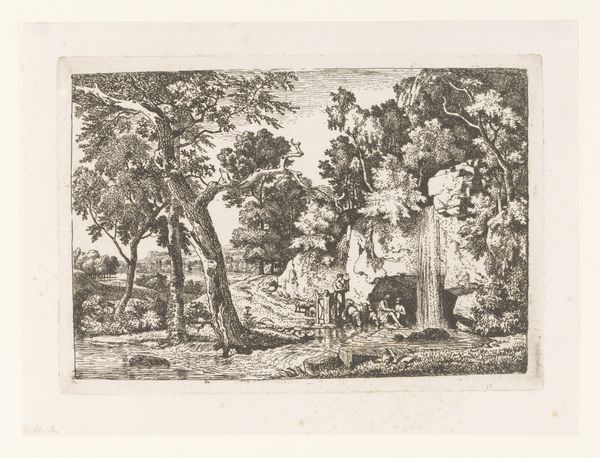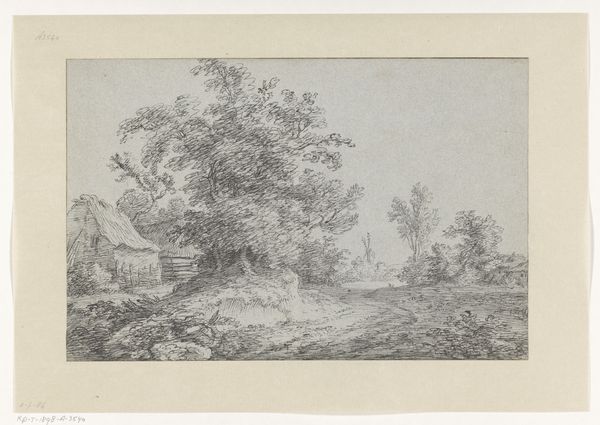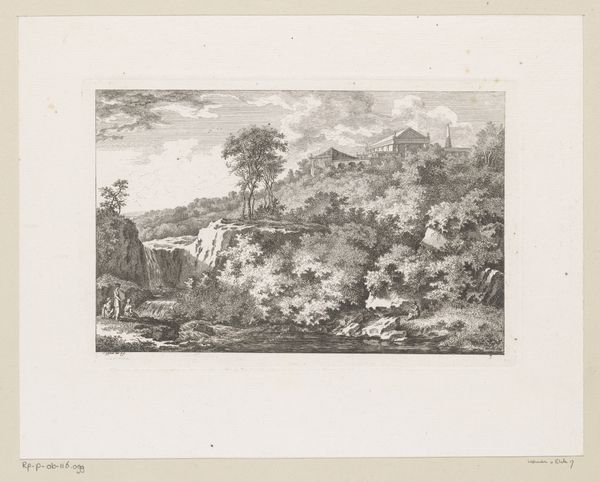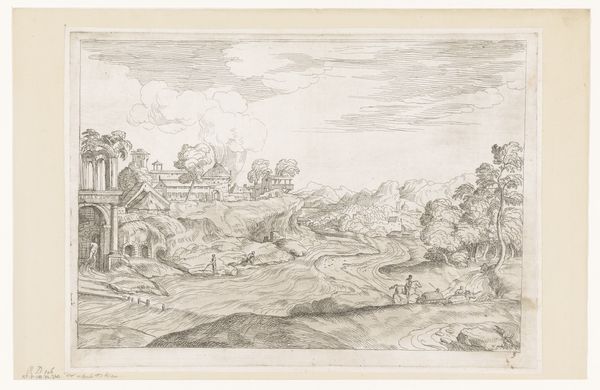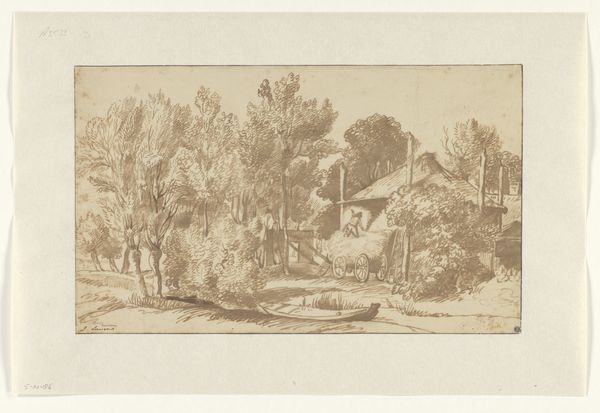
etching, engraving
#
etching
#
landscape
#
etching
#
romanticism
#
engraving
Dimensions: height 150 mm, width 406 mm
Copyright: Rijks Museum: Open Domain
This delicate landscape with figures at a spring was made by Philippe Auguste Hennequin using etching, a printmaking technique. The artist would have covered a metal plate with a waxy, acid-resistant ground, then scratched away lines with a pointed tool, exposing the metal. When dipped in acid, the exposed lines would be eaten away, creating grooves. This plate is then inked and printed, transferring the image to paper. The fineness of the lines speaks to the artist’s skill in manipulating the etching needle and controlling the biting of the acid. In Hennequin's time, prints were a popular medium for circulating images widely and relatively cheaply. In this case, the print gives the impression of an original drawing. Though this artwork evokes leisure, its mode of production is intimately tied to industry and labor. The print's accessibility democratizes art, making it available to a broader audience beyond the traditional elite. By focusing on the means of production, we can appreciate the complex relationship between art, labor, and society in Hennequin's time.
Comments
No comments
Be the first to comment and join the conversation on the ultimate creative platform.
